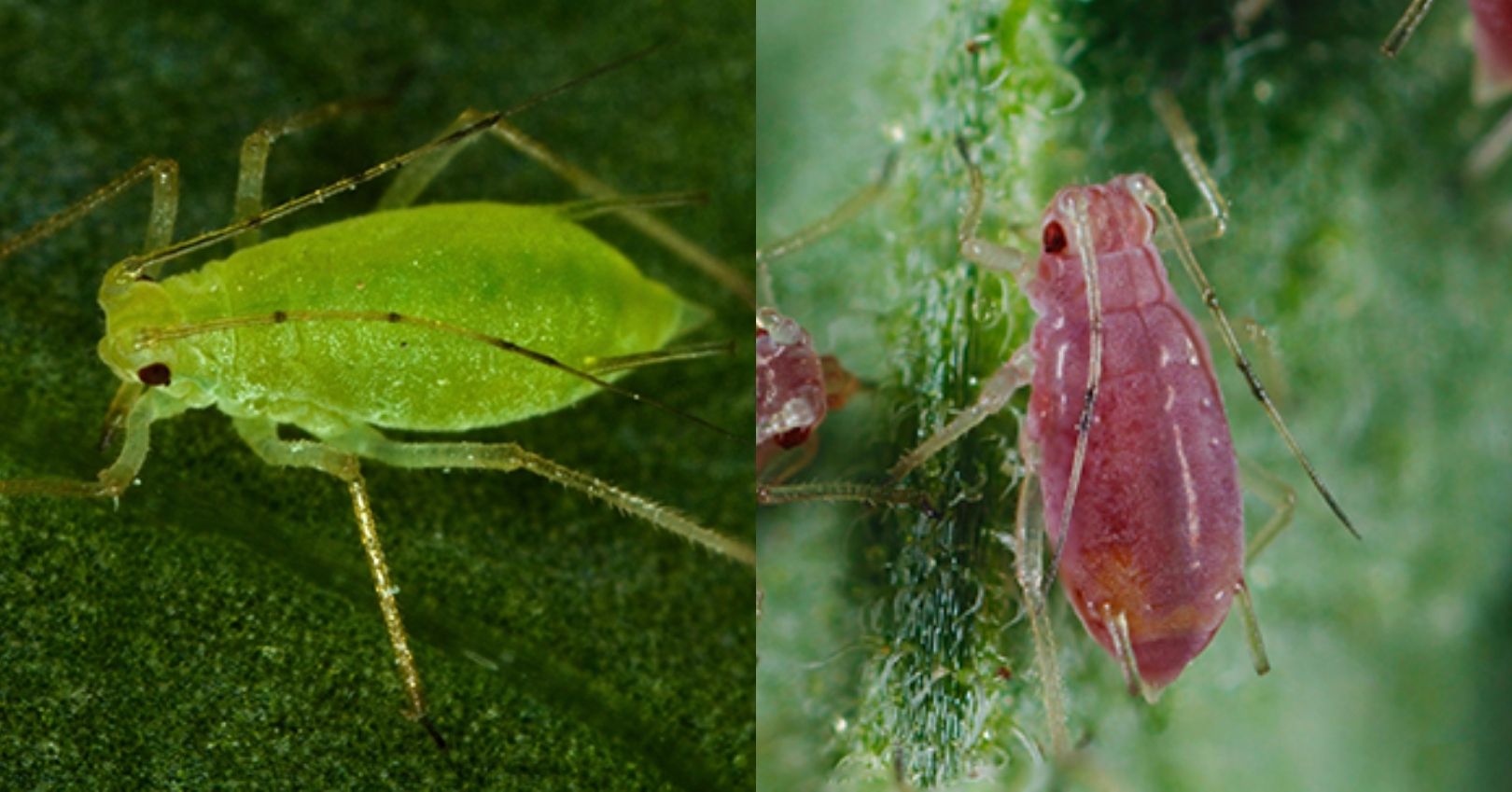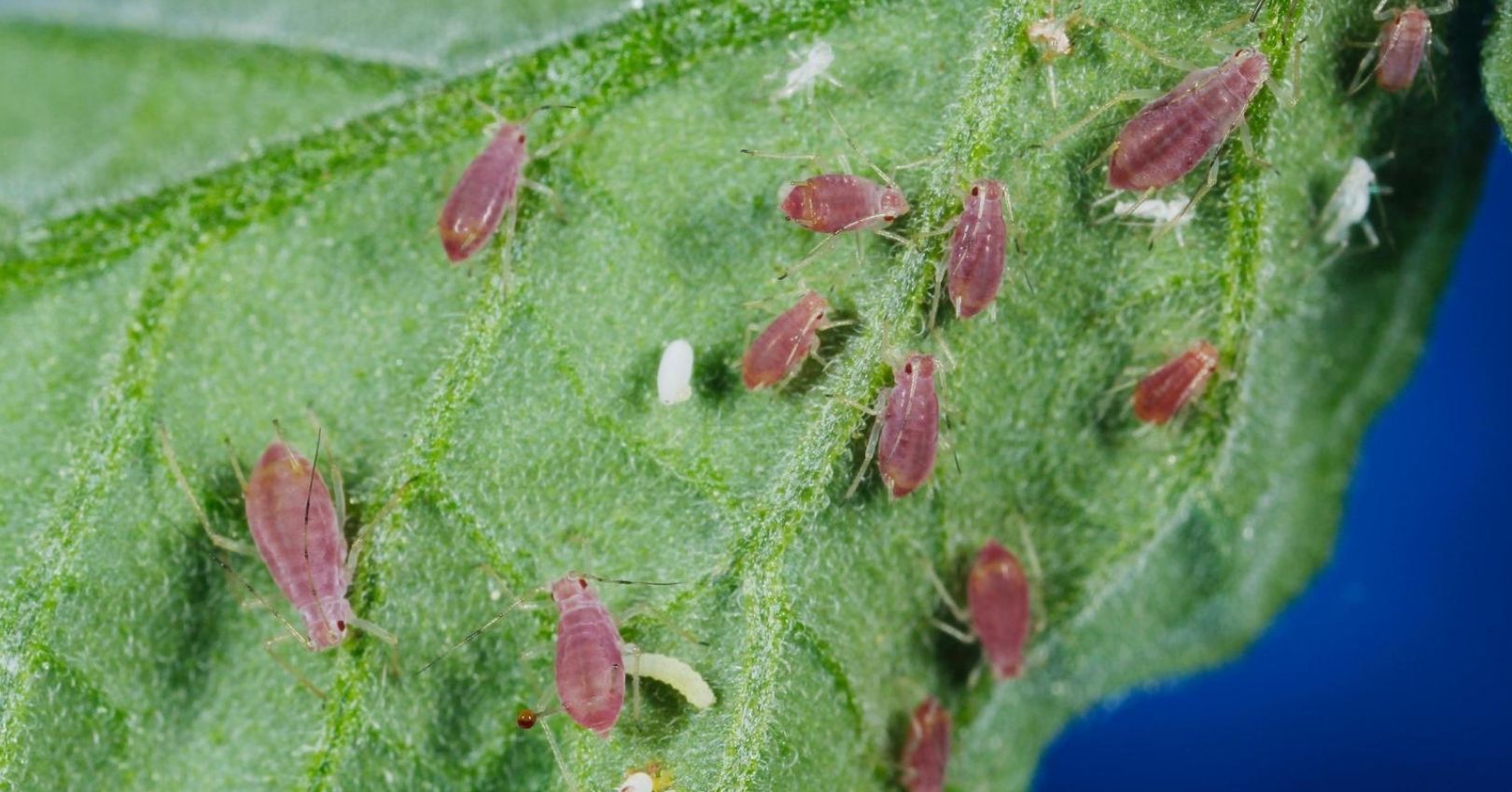Aphids
Green Peach Aphid


Description
Adult: Soft, pear-shaped body with red eyes and tailpipe-like appendages called cornicles on the rear of the body. Wingless adults are yellowish or greenish. The winged adult has a yellow-green abdomen, with a large dark patch on its back. It has a black head and thorax and is the same size as the wingless form. The oviparous (egg-laying) form is pinkish.
Egg: Initially yellow or green and become shiny-black as they mature. Eggs measure about 0.02 inches (0.50 mm) long and 0.01 inches (0.25 mm) wide. Eggs are usually deposited near buds of Prunus spp. trees.
Nymph: Similar in shape and color to the wingless adult, but are smaller. Nymphs that develop into winged adults may be pinkish.
Damage
The green peach aphid is the most important vector of potato leaf roll virus (PLRV). It also vectors potato virus Y (PVY). Both diseases are particularly damaging viruses in solanaceous crops such as potato. See the diseases section of this chapter for more information on PLRV and PVY.
Potato Aphid
Description
Adult: Larger than the green peach and melon aphids, 0.08-0.16 inch (2-4 mm) long with pink or green bodies.
Egg: Similar to green peach and melon aphid eggs.
Nymph: Similar color and shape as adults, but small.
Damage
The potato aphid may act as a vector for potato virus Y (PVY) and cucumber mosaic virus (CMV). See the diseases section of this chapter for more information on PVY.
Aphid Life History
Most vegetable aphid species have similar life cycles. Green peach aphid overwinters as eggs on peach, nectarine, apricot, and plum trees. Potato aphid overwinters as eggs on wild and ornamental rose plants. Eggs hatch as all females in spring. Adults reproduce asexually, give live birth, and have 2-16 generations. They move from overwintering hosts to vegetable crops and/or weeds for the summer. Winged, migrant aphids develop when food quality declines, crowding occurs, or when they are seeking new plant hosts. In late summer to fall, aphids reproduce sexually to lay eggs for overwintering. Potato aphid populations are generally highest in the spring and fall.
Aphid Management
Cultural
- Avoid excess fertilization. Aphid densities tend to be higher on plants that have succulent, vigorous growth.
- Use mulches or row covers. Reflective mulches and row covers can help reduce aphid populations on vegetables by interfering with the ability of winged aphids to find plants.
- Remove/destroy plant debris. Disking fields immediately after harvest will destroy alternate host plants and reduce available aphid and virus sources.
Chemical
Many aphid species in other parts of the world have developed resistance to multiple insecticide groups, including some synthetic pyrethroids, carbamates, and organophosphates. In Utah, use these insecticides sparingly; instead choose products that are less damaging to natural enemies of aphids and non-target insects.
Biological
Natural enemies such as lady beetles, lacewings, syrphid flies, and parasitic wasps play a major role in the suppression of aphids.

